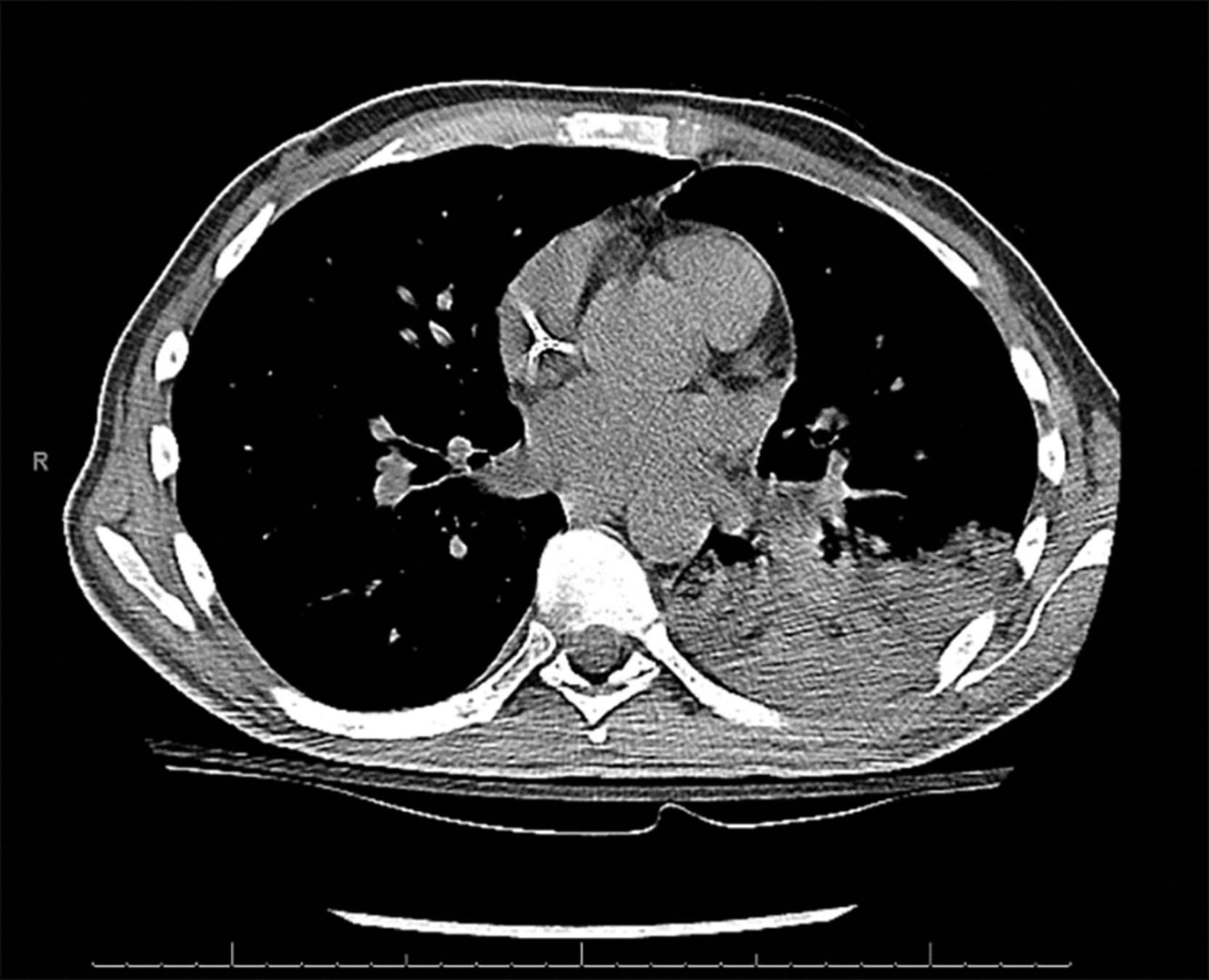Physical Address
304 North Cardinal St.
Dorchester Center, MA 02124
A rapid response code was activated for a patient who appeared to be in acute respiratory distress. On arrival of the condition team, the patient was found to be a 45-year-old male with a history of myasthenia gravis who was admitted to the hospital with possible pneumonia. The patient has been experiencing fever for one to two weeks associated with increased sputum production and purulence. On admission, the patient was empirically started on ceftriaxone and azithromycin. Overnight, the patient developed worsening blurry vision/double vision with worsening oxygen saturation requiring further assistance from the rapid response team.
Temperature: 96.5 °F, axillary
Blood Pressure: 110/75 mmHg
Heart Rate: 145 beats per min (bpm)
Respiratory Rate: 36 breaths per min
Oxygen Saturation: 80% on room air, 95% on 12 L/min (LPM) high flow nasal cannula.
A quick examination showed a middle-aged gentleman in severe distress. He was alert and responsive to commands. Gurgling sounds could be heard coming from the patient’s throat, and he was having difficulty swallowing or coughing up any secretions. His lung examination showed tachypnea, coarse breath sounds in all lung fields, and the use of accessory muscles of respiration. His cardiac exam showed tachycardia with normal heart sounds. No peripheral edema was appreciated. The patient had significant weakness of bilateral upper extremities and had considerable difficulty raising his arms against resistance. A detailed neurological exam was not done, given tenuous respiratory status.
A cardiac monitor and pads were attached immediately. A 15 LPM non-rebreather facemask was applied, which improved the patient’s oxygen saturation to 99%. An emergent chest X-ray was obtained at the bedside, which showed an opacity in the left lower lung. The clinical scenario was concerning for mucous plugging vs. aspiration, given the patient’s poor respiratory effort and inability to clear secretions. Due to continued respiratory distress, the patient was intubated by an anesthesiologist at the bedside using rapid sequence intubation. Computed tomography (CT) chest was ordered to evaluate for pneumonia ( Fig. 27.1 ), and the patient was taken to the intensive care unit after for therapeutic bronchoscopy and further management.

Become a Clinical Tree membership for Full access and enjoy Unlimited articles
If you are a member. Log in here